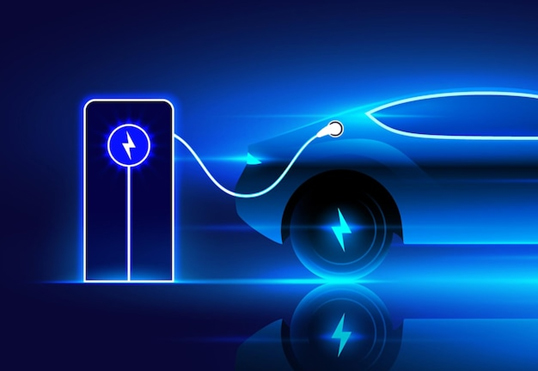Zinc air batteries can be used along for low power vehicles and used in combination with lithium-ion batteries for high power vehicles. Other important advantage is the low cost of zinc-air batteries, which is at least 3 times cheaper, making it as a potential technology for EVs.
For the last ten years, the EV market has been growing constantly. Lithium-ion batteries are a market favourite in the automotive industry because of the rising demand for electric vehicles and their direct correlation with battery demand. Additionally, the use of lithium-ion cells in consumer electronics items like laptops and mobile phones has significantly increased the demand for lithium-ion batteries. However, ELE Times was interested in a recent advancement in EV battery technology. Researchers at the Indian Institute of Technology in Madras worked to create zinc-air batteries that can be mechanically recharged as an alternative to the lithium-ion batteries that are currently used in electric vehicles.
To know further about this development and to be the voice of this vision ELE Times got the opportunity to interview Dr. Aravind Kumar Chandiran, who is an Assistant Professor in the Department of Chemical Engineering, at IIT Madras. He has been working with his research team to create an affordable replacement for lithium-ion batteries.
ELE Times: What benefits will EV manufacturers witness by replacing Lithium-ion batteries with Zinc-air batteries?
Dr. Aravind Kumar: Our zinc-air battery technology is a low cost and high energy system. However lithium ion batteries are high power system. So our technology can go in two different domains, one for low powered two – and three – wheelers and other as a range extender for long haul vehicles. Essentially, it means, the lithium ion can be substituted in smaller vehicles, but for high power vehicles like trucks and buses, we need partial substitution of lithium batteries with zinc-air systems. The reason being, in the same volume available for batteries in vehicles, more energy can be stored. The combination of lithium-ion and zinc-air solves both the high power, high energy and long-range anxiety. Whenever transient high power is required like initial movement of vehicle from rest/traffic signals, and climbing up hill, lithium ion batteries will kick in. On a steady speed drive, constant power will be drawn from zinc-air. As the latter are high energy devices, the combination of two batteries would help running vehicle for longer distances simultaneously covering the high power requirements. In the case of two- or three-wheelers, since they require low power these vehicle can completely run on zinc-air.
To summarize, zinc air batteries can be used along for low power vehicles and used in combination with lithium-ion batteries for high power vehicles. In the latter case, by using the combination of batteries, we enable long haul drive. One other important advantage is the low cost of zinc-air batteries, which is at least 3 times cheaper, making it as a potential technology for EVs.
ELE Times: What is the main technology or concept used behind the working of mechanically powered zinc-air batteries?
Dr. Aravind Kumar: Conventionally in electric vehicles, batteries are electrically rechargeable. However depending the EV sector charging infrastructure may vary from normal charging to high speed charging. Normal charging takes somewhere around 3 to 4 hours for complete charging. Battery swapping is an excellent option, wherein the discharged batteries can be swapped with a charged batteries at Battery Swapping Stations. However this accounts for twice the CAPEX investment, meaning there should be two sets of batteries/modules for every vehicle. One would stay in the vehicle and other would be in the charging station. On one hand home charging takes time, and on the other hand swapping stations demand huge CAPEX. To balance these aspects we came up with an idea of only replacing a part of the batteries every time. Like we go to petrol pumps to get petrol, in our mechanically rechargeable case, we will get zinc. Essentially the zinc stations will take the discharge spent-zinc from vehicle, insert fresh zinc cassettes and vehicle would be ready to move on. Our design enables ultrafast zinc replacement, in less than 5 min. Meaning, EV users will have the same feel as IC engine based vehicles, where they have to spend around 5 minutes in petrol pumps. The spent-zinc will be converted back zinc plates using solar powered process, which we are also developing. Overall, the end-to-end we ensure 100% green energy with no net emissions.
ELE Times: How do you compare the pros and cons of Zinc-air batteries and Lithium-ion batteries?
Dr. Aravind Kumar: Zinc-air is low cost and very high energy system. Whereas lithium ion batteries are medium energy and high power systems, with high cost. It about the marriage between low cost, high energy and high power system that we proposing for long haul vehicles (eg. Trucks) to enable smoother transition from IC engines to EVs. India doesn’t have manufacturing technology for making lithium ion cells, neither do we have necessary raw materials. We will have to depend on import heavily. Even assuming we are tech. transferring from elsewhere aboard, the manufacturing of lithium ion battery requires ultra-dry environment which adds to huge CAPEX investment. In the case of zinc-air batteries, technology is developed in house and almost all the raw materials are available with in the country. By the way, India is one of the top producers of zinc. Next is safety. Zinc-air batteries are water based devices hence they are absolutely safe and never explode like lithium-ion systems. The devices are modular meaning if a cell fails in a module/pack no complete replacement is required, rather than one failed cell can be replaced. This ensures low cost usage of devices in long run. Being said about the advantages, let me highlight that zinc-air batteries are low power devices and cannot be used in silo in high power EVs.
ELE Times: What do you see as the availability of raw material for Zinc-air batteries?
Dr. Aravind Kumar: As said in the previous question, India is one of the largest producers of zinc and we absolutely have no issue with raw material availability in the country. Per capita consumption of zinc in India is very low compared to western countries average, so this battery technology can increase the per captia consumption.
ELE Times: What challenges are faced with the usage of Lithium-ion batteries and how will your project bring about a change in the EV industry?
Dr. Aravind Kumar: Rather than projecting zinc-air batteries to solve the challenges with lithium-ion batteries, I would say let’s use the best of both and bring a change in EV industry. At the end of the day EV user have to feel absolutely comfortable using them with low cost of ownership, inherent safety, while combining the benefits of IC engine vehicles. EV industries are trying their best to bring all the aforementioned characteristics, by leveraging on the existing technologies. The zinc-air will greatly supplement on lost cost, and safety fronts! And above all, we become technology independent with in-house resources contributing phenomenally to Atmanirbhar Bharat!
ELE Times: What was the inspiration behind your project?
Dr. Aravind Kumar: It’s simple! There cannot be only one solution to such a large opportunity (eg. Energy storage in EVs). This pushed us to innovate and identify next gen. tech. for energy storage. The more the options available, the more the opportunities for EV manufactures/users to choose from depending on their needs/requirements.
ELE Times: What is the feasibility for the EV industry to adapt to zinc-air batteries for EVs?
Dr. Aravind Kumar: We are at the prototyping stage and it would need to pass alpha- and beta- trials before putting them on road! Any technology innovated in lab, takes at least 5 to 10 years to see the value. We are not exempted from it. Lithium-ion technology was invented in 1970s and commercialized for mobile gadgets in 90s and improved to meet EVs requirements at around 2015. However lithium-ion battery development is assisting us to move our technology faster as we have proper ecosystem both in terms of manufacturing and market. We have clear cut confidence based on lab trials and experiments and we believe in around 3 years we will have more clearer answer based on scale-up and field trials.
ELE Times: Will there be any challenges to marketing Zinc-air batteries?
Dr. Aravind Kumar: Any new comer fighting with giant technology will have serious adoption issue unless it offers phenomenal advantage. For example, if billion are spent on CAPEX in producing lithium-ion batteries, it won’t be feasible to abandon the entire infrastructure and turn gears on one day to zinc-air, irrespective of performance/cost. So a gradual adoption is required. How to make this gradual adoption is a question and find answer to it is a challenge! Our technology definitely offers step-advancement, rather than minuscule improvements. So we believe we will have good opportunity in EV market.
ELE Times: How safe are zinc-air batteries with respect to Lithium-ion batteries for EVs?
Dr. Aravind Kumar: Put them in fire and I guarantee it won’t catch fire! No flammable solvents used, so it is absolutely safe!










